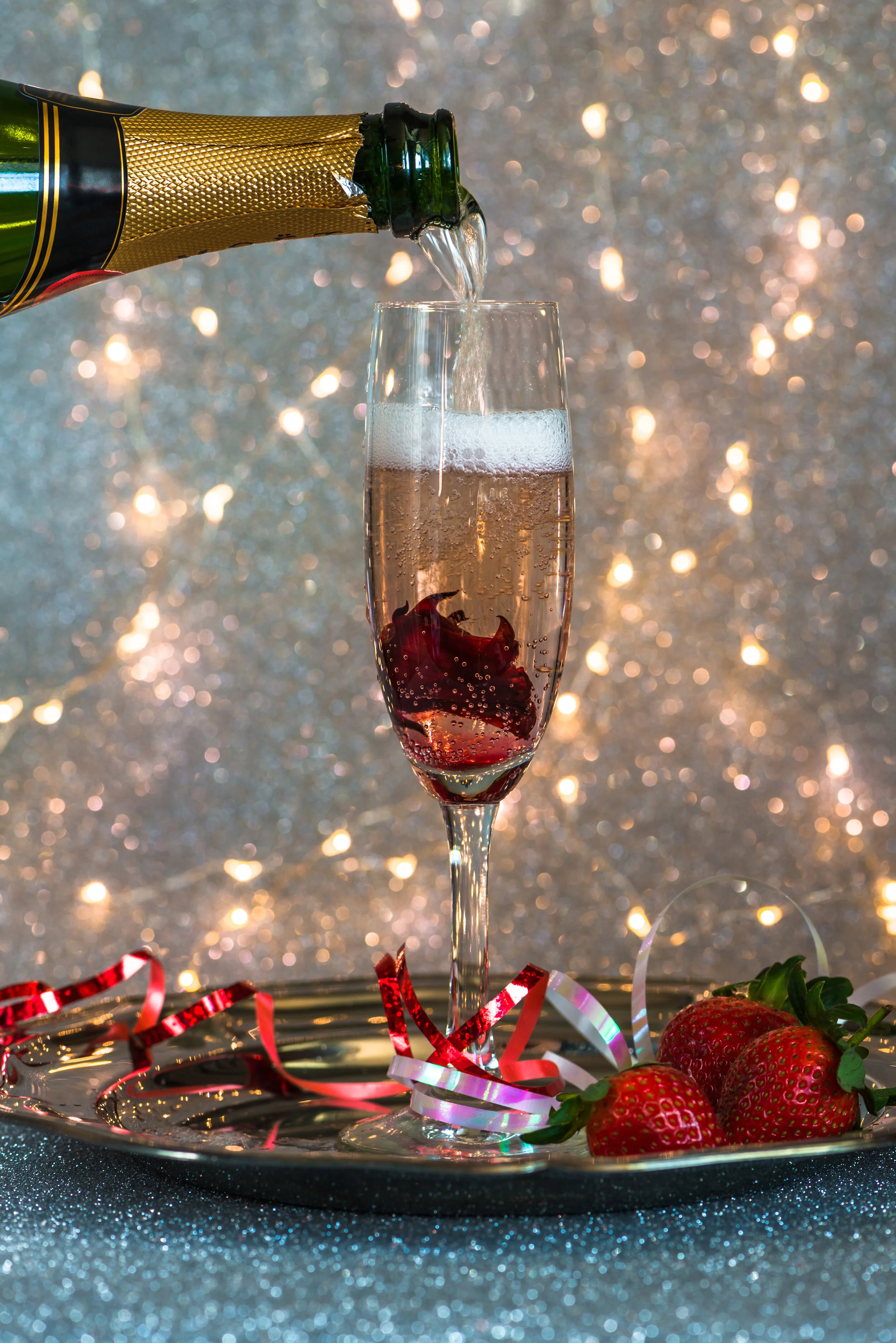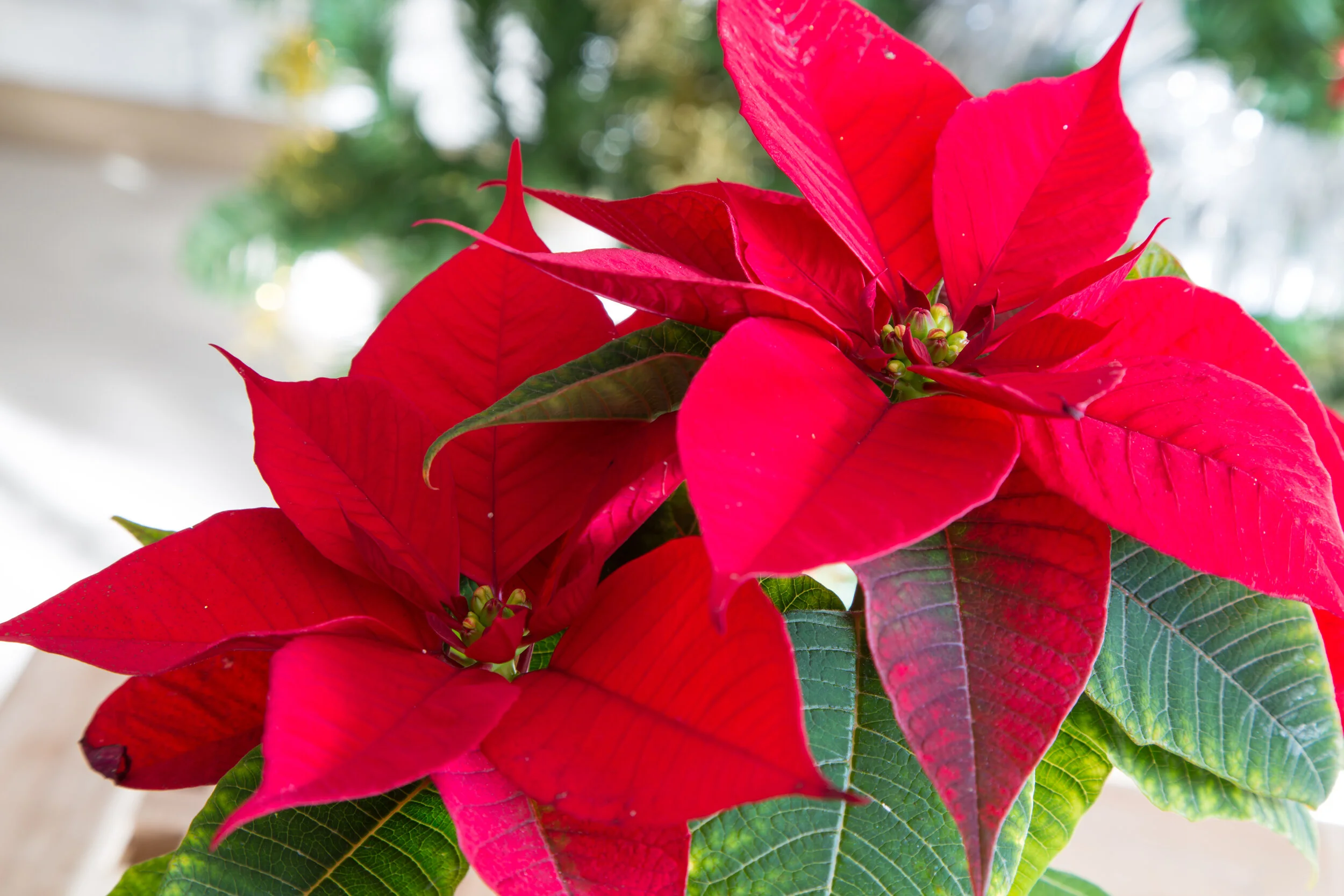Three Flowers for Festive Cocktails
A couple of months ago I was in England. One day we decided to visit Stratford-upon-Avon (the birth place of Shakespeare), and it just happened that there was a street fair showcasing local products . One of the vendors was a gin maker, (Pinnock Gin), and one of his gins caught my eye - it was the prettiest shade of purple. It turns out it was
A couple of months ago I was in England. One day we decided to visit Stratford-upon-Avon (the birth place of Shakespeare), and it just happened that there was a street fair showcasing local products . One of the vendors was a gin maker, (Pinnock Gin), and one of his gins caught my eye - it was the prettiest shade of purple. It turns out it was violet-infused. Of course with my love of all-things-floral, this appealed to me; and even more so when I was told the best way to use it was to pour a shot of the gin into a fluted glass and top it off with prosecco. All I could think of how was how delightful a drink that would be. So I purchased a bottle and I can now attest to the fact that the ‘Sparkling Violet’, (my name for it) is indeed a very delightful cocktail.
Many cocktails have long included flowers in their recipes, whether as an infusion, a liqueur, or as a garnish. Three flowers that work really well in drinks are rose, lavender, and hibiscus.
Rose: The flavour from the rose comes from the scent, so make sure to choose a fragrant variety, but use your judgement as to how much. The more fragrant the flower, the stronger the flavour will be. You want to add a touch of sweetness and a just a hint of florals to your drink - you don’t want it to taste like perfume! Recently I came across a recipe for a rose petal sangria that I can’t wait to try! Rosé wine with pink rose petals - what’s not to like!
Lavender: A member of the mint family, lavender has a herbaceous quality to it, and yet it’s floral fragrance makes it unique to any other member of the mint family. Lavender can be used fresh or dried as one of the ingredients in your drink , or use as a garnish to give your cocktail a dreamy, relaxing feeling. If you want to get some recipes for cocktails and non-alcoholic drinks using lavender, take a look at Yummerly’s website for great ideas.
Hibiscus: It’s well known that a hibiscus flower is a big beautiful bloom found in tropical locations. Less well known is the fact that it’s a very edible flower. In fact you can go to many local grocery stores and buy a jar of hibiscus flowers in syrup. You just place one of the blooms and about a tablespoon of the syrup in the bottom of a fluted glass. Top it off with sparkling wine and ‘voila’ - the perfect cocktail for the holiday season.
There are many other flowers that work well in beverages, but these three are a great place to start. A word of caution - be very sure that the flowers you are using haven’t been grown with any chemicals or pesticides or next to a roadside where they’ve been exposed to exhaust fumes. Once you’ve confirmed your flowers are safe and edible, try out some tried and true recipes and then have some fun creating your own. Cheers!
The Poinsettia
December 12th is National Poinsettia Day, the perfect opportunity to share with you a Mexican legend that explains why the poinsettia is the flower of Christmas.
There was once a poor, young girl named Pepita, making her way to church on Christmas Eve. She was sad because she didn’t have a gift to present at the nativity to baby Jesus like the other children would. Her cousin reminded her that
December 12th is National Poinsettia Day, the perfect opportunity to share with you a Mexican legend that explains why the poinsettia is the flower of Christmas.
There was once a poor, young girl named Pepita, making her way to church on Christmas Eve. She was sad because she didn’t have a gift to present at the nativity to baby Jesus like the other children would. Her cousin reminded her that even the most humble gift, given in love, would be acceptable in His eyes. So Pepita, gathered a bundle of weeds from the roadside. As she presented the bouquet at the nativity scene, the common weeds miraculously turned into brilliant red blooms!! They became known as the ‘Flowers of the Holy Night’, what we call poinsettias.
I first learned this story when I was a preschool teacher. Children are so inquisitive that as a teacher you tend to research a lot of things just to be able to answer all their questions. A random inquiry about the poinsettia led me to this legend.
Before I came across that story I don’t think I’d ever had a poinsettia during the holiday season - (Confession time: while I love flowers, I’m not very good with plants). But ever since then, I make sure I always have at least one poinsettia in my home. It usually only lasts a couple of weeks, but I find it reminds me of the lesson from the legend – it’s not about the value of the gift, but the thought behind it.
This lesson is something that can translate into giving flowers throughout the year. The smallest of posies will put a smile on someone’s face. A single bloom in a bud vase will brighten an environment. And just a small bundle of lavender will help create a calm relaxing atmosphere as you go to bed. So pick up a small bunch of fresh flowers for your home this week, and while you’re at it, perhaps also a poinsettia!
Here are five facts about poinsettias:
1 – In the language of flowers poinsettias symbolize good cheer and success;
2 – The poinsettia is the highest selling potted plant. Red is the most popular colour followed by white and pink;
3 – Other names for the poinsettia are ‘lobster flower’ and ‘flame-leaf flower’;
4 – The ‘flower petals’ of the poinsettias are actually modified or specialized leaves.
5 – The poinsettia is originally from Mexico where it’s a perennial shrub that can grow 10-15 feet tall.


